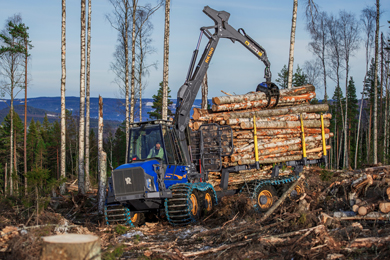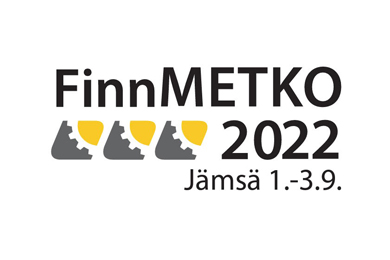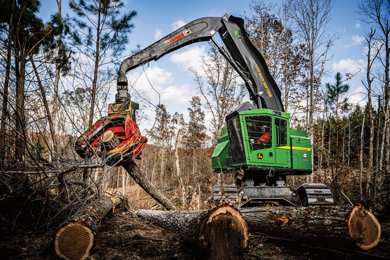Rottne Industri delivered 40 new forest machines to Canada last year.
And interest in the Swedish forwarders and harvesters continues to increase on the other side of the Atlantic.
‘The investment in the North American market continues. One step in this is that Rottne Canada is going from previously being tenants to now having acquired a property with modern premises’, says Tobias Johansson, CEO of Rottne Industri.
For Rottne Canada, having its own premises means that the company can more easily continue with the investment that began a couple of years ago. In recent years, the company has built a new network of dealers in the country with very good results.
In terms of sales, we see a clear rise in our machines, says Niklas Lefévre, sales and marketing manager at Rottne Industri.
Above all, it is about our large forwarders, Rottne F18 D and Rottne F20 D , which account for 60 percent of the orders. Interest has also skyrocketed in our harvesters, in particular the Rottne H21D.
Rottne Canada was formed as a subsidiary of Rottne Industri in February 2008, mostly to provide a spare parts warehouse for the machines. Since then, the company has leased its premises in Moncton, New Brunswick, on the Canadian east coast.
Until last fall when the opportunity arose to purchase premises from a former paver company, built in 2018.Rottne Canada now has a permanent home in Moncton, NB WE are excited to now have premises that will contribute to our success. This means that we can take care of our customers even better and also have room to grow, which is one of our goals, says Denis Surette, site manager at Rottne Canada.
Rottne Canada is a large company and since their market is growing, we want to own our premises, not rent. The contract is valid from January and since last autumn we have been on site in our new premises, continues Tobias Johansson.
The property is strategically located on the outskirts of Moncton with close proximity to the main routes around the city. The approximately 1,000 square meters have space for the machines, service, spare parts warehouse and office building for the approximately ten employees.
Our type of felling machines do well in this part of the world. Apart from the fact that they are good machines, other significant advantages are also environmental awareness, being able to absorb directly out in the forest and fuel-efficient engines now that the fuel has skyrocketed even in North America, says Tobias Johansson.
The effort that Rottne Industri has made in Canada has borne good fruit. The order intake continues to be replenished, both for forwarders and harvesters, but that does not stop future plans.
We succeeded in our goal of delivering 40 new machines to the Canadian market in 2022. With new and own premises, as well as an established dealer network, we have significantly greater opportunities to continue growing and thus take the next step in the market. And that is our plan, says Niklas Lefévre.
In summary, 2022 was a successful year for Rottne Industri, which delivered a total of 192 machines, which is an all-time high. And this year the company aims even higher.
The order books are fully signed and the goal is to deliver 220 machines, which feels very fun and exciting, says Tobias Johansson.
About Rottne industri AB
Rottne Industri AB is a family-owned Swedish company and one of the leading forest machine manufacturers. For 68 years, the company has developed forest machines for modern forestry. Rottne Industri AB offers a complete machine program of harvesters and forwarders, from thinning to rough final felling. Around half of the production is exported. www.rottne.com
Rottne Canada
Rottne Industri’s product line has been in the Canadian market for over 25 years. Rottne Canada Inc. was formed in February 2008 to take over the marketing, support and spare parts inventory of Rottne products. Both harvesters and forwarders are highly respected for their high productivity, reliability and economy of ownership and operation. The company has an extensive range of spare parts on site and offers a full range of grapples and sawing units. Rottne Canada is located in the city of Moncton in the state of New Brunswick
Photographer: Rottne Industri
The Rottne F18D and Rottne F20D forwarders are both very popular in Canada.
To read other Rottne related posts click here.



